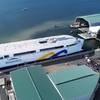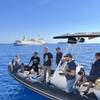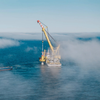Effective Means Of Combating Invasive Aquatic Species Urged
“After Three Years Of Working Under The Voluntary Program, We Have A Very Poor Record Of Compliance” – Subcommittee Chairman Duncan “The Coast Guard issued the voluntary guidelines in 1999,” said U.S. Rep. John J. Duncan, Jr. (R-TN), the Chairman of the Water Resources and Environment Subcommittee. “Unfortunately, after three years of working under the voluntary program, we have a very poor record of compliance. “Reducing the introduction and spread of aquatic invasives is a difficult problem to solve. Ballast water exchange is not perfect, and it is not practical, or safe for all ships at all times. “We need alternative ballast water management methods that will protect ship and passenger safety and the environment, while maintaining interstate and foreign commerce. I hope that the Coast Guard will move forward quickly to approve alternative methods of ballast water management that meet all of these criteria,” said Duncan.
Witnesses Outline Need For Mandatory Regulations A provision of NISA directed the Coast Guard to report to Congress with an assessment of compliance with the voluntary ballast water management regulations. “The Secretary’s report, which will be submitted within days, concludes that the consistently low rate of voluntary reporting makes it impossible to accurately assess compliance and effectiveness,” said U.S. Coast Guard Captain Michael Brown. NISA directs the Coast Guard to turn the voluntary guidelines into enforceable regulations if they determine that compliance is inadequate or if reporting and record keeping is insufficient to determine the rate of compliance. “Steps are being taken to meet this mandate,” said Captain Brown.
Other witnesses agreed that the current system was insufficient and needed to be strengthened. “AAPA [The American Association of Port Authorities] believes the Coast Guard should promulgate regulations as soon as possible to make the current voluntary program mandatory,” said AAPA Chairman Richard Steinke. Some states have enacted laws to address ballast water management and invasive species. Though these laws can be effective, witnesses pointed out that they are not uniform. “A patchwork of regulatory systems is unproductive for ships and for environmental protection,” said Allegra Cangelosi of the Northeast-Midwest Institute. “It places financial and administrative burdens on states who must respond to a public demanding better ballast treatment and prevention, and it stretches very thinly the resources of interest groups which seek to be involved in the multiple and simultaneous state policy-making.”
Alternatives To Ballast Water Exchange Needed Ballast water exchange to reduce the risk of nonindigenous species introduction is currently the only ballast water management option approved by the Coast Guard. “Ballast water exchange is only an interim measure to reduce the risk of introduction of nuisance species. There is a great need to develop more effective and efficient approaches to ballast water management on ships,” said Steinke. “It is generally recognized that for safety and other reasons, ballast water exchange may not, in certain situations and for certain types of vessels, be a practicable or readily available solution to address the important issue of transfer of potentially invasive aquatic species in ballast water,” said Jack Robinson on behalf of the Chamber of Shipping of America. “A toolbox of management options can be developed which will comprehensively address ballast water management on the wide variety of vessel types whose voyages originate in global ports of call and end in U.S. ports,” said Robinson. Addressing the issue of new technologies, Coast Guard Captain Brown said, “A critical hurdle to developing an accepted treatment technology is the absence of a standard by which proposed technologies can be evaluated. The Coast Guard is leading a coordinated effort involving a wide range of stakeholders to develop such a standard. “The Coast Guard is also in the process of developing a program that will provide incentives for ship owners and operators to actively participate in projects designed to test treatment technologies,” said Captain Brown. All witnesses agreed that the Coast Guard should move expeditiously in establishing an interim standard.










